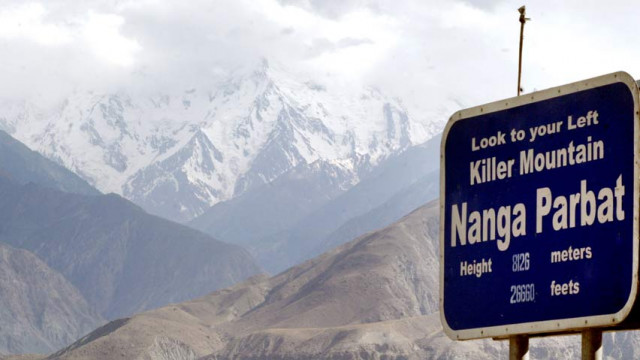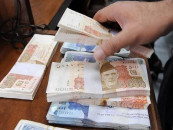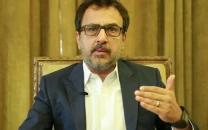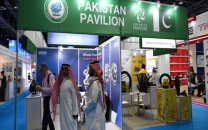Tourism has fallen from great peaks
Step-by-step plan to revive inherently profit-making industry

Tourism has fallen from great peaks
Due to deteriorating security, the number of foreign tourists has gradually declined and the 2013 Nanga Parbat tourist shooting incident has terribly affected the industry. Moreover, foreign tourism in Pakistan is at a low ebb, badly hit by the country’s reputation for violence.

Pakistan’s tourism industry was at its prime during the 1970s when the country received unprecedented amounts of foreign tourists. The main destinations were the Khyber Pass, Peshawar, Karachi, Lahore, Swat, Quetta, Gwadar and Rawalpindi.
It can be hard to digest now, but there was a time when Pakistan was a prime tourist destination. In the 1960s and 1970s, it was part of the vaunted hippie trail – the name given to the journey taken by people from the hippie subculture – when backpackers from Europe would cross the Khyber Pass and make their way through Peshawar, Chitral and Karachi.
Now, as ranked by the World Economic Forum’s Travel and Tourism Competitiveness Index, it is ranked 122nd out of 140 countries. That is actually an improvement of three ranking points from last year but if this is a victory, it is purely a Pyrrhic one.
There are many reasons for the decline in tourism but none looms larger than the security threats that plague the country. From Kashmir to the northern areas and from Fata to Swat, it simply is not safe for foreigners to come and experience the best the country has to offer.
Demand for international tourism was strongest for destinations in Asia and the Pacific (+6%), Africa (+6%) and Europe (+5%). The leading sub-regions were South-East Asia (+10%), Central and Eastern Europe (+7%), Southern and Mediterranean Europe (+6%) and North Africa (+6%).
Despite global economic challenges, international tourism results were well above expectations, with an additional 52 million international tourists travelling the world in 2013. For 2014, World Tourism Organization (UNWTO) forecasts 4% to 4.5% growth – again, above long-term projections.
Out of the global tourism income of $514 billion, the share of South Asia is $5.4 billion, including Pakistan’s share of only $135 million – that is 0.03% of global and 2.5% of South Asia’s share. Out of the total tourist arrivals in the world estimated at 694 million per year, Pakistan receives only 0.5 million tourists annually. Even among South Asian countries, tourist arrival in Pakistan is extremely disappointing.
Pakistan has been facing problems in policy as well as implementation to exploit the inherent tourist potential of the country due to social and religious constraints, ineffective promotional policies, lack of infrastructure and inadequate tourist services.
The tourism potential of the country has not been realised and harnessed properly during the past because of a lack of initiatives on part of the concerned government departments, which also include inadequate knowledge and training of relevant personnel in the tourism sector.
It also includes the law and order situation in the country particularly in the areas of high tourist attraction, general image of the country in Europe and US, which to a large extent is based on fears generated out of foreign media; undeveloped tourist sites and inadequate infrastructure facilities. There are also socio-cultural constraints, and lack of incentives in the tourism sector and lack of projection through media to the outside world.
The strategies to develop tourism industry would include formulation of a comprehensive and realistic tourism policy that will support tourism as an industry and create credibility.
The private sector will be involved for tourism development through lease and rent agreements. The PTDC can concentrate its activities in the marketing, promotion, and development of tourism. New market segments will be explored, marketing efforts for tourism at cultural places can be intensified and training in tourism services can be improved in collaboration with international tourism and hotel management institutes.
The tourism-related legislation can also be revised, including consolidation of various rules and regulations, revision of the Hotel and Restaurant Act 1976 and Travel Agency Act of 1976 and the adoption of a pro-investment land lease policy.
An emphasis can be placed on provision of physical infrastructure at places of touristic interest complemented by environmental improvement programs.
The fallen tourism industry needs to be revived through planning and implementing access to finance, investment incentives, attracting foreign investments and efficiently handling the management of local tourism. Only then can we expect to regain the glory days of Pakistani tourism.
The writer is a researcher at Sustainable Development Policy Institute
Published in The Express Tribune, November 3rd, 2014.
Like Business on Facebook, follow @TribuneBiz on Twitter to stay informed and join in the conversation.


















COMMENTS
Comments are moderated and generally will be posted if they are on-topic and not abusive.
For more information, please see our Comments FAQ